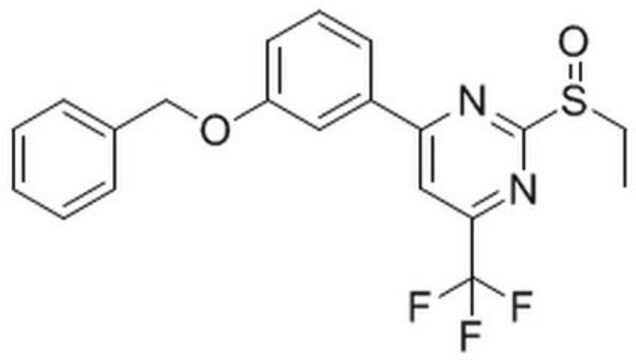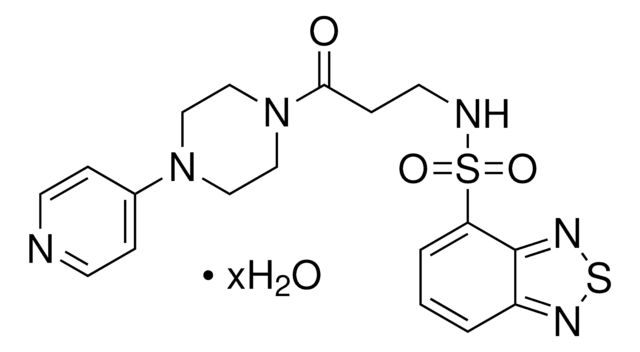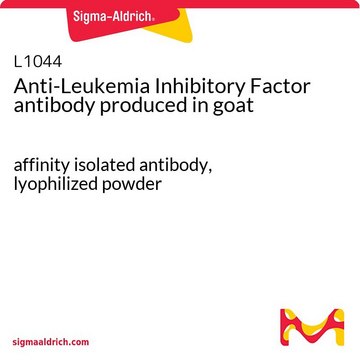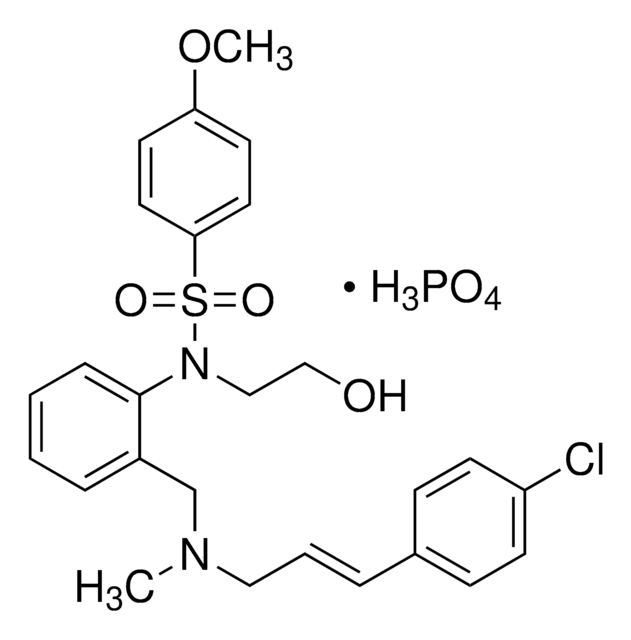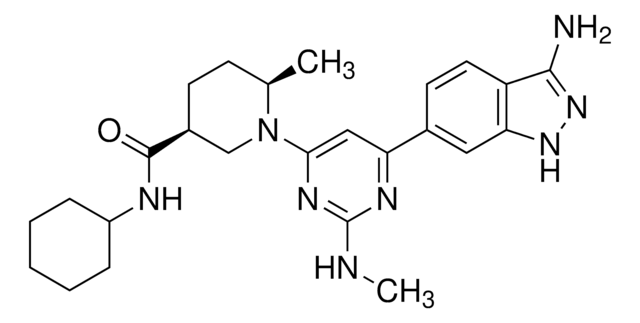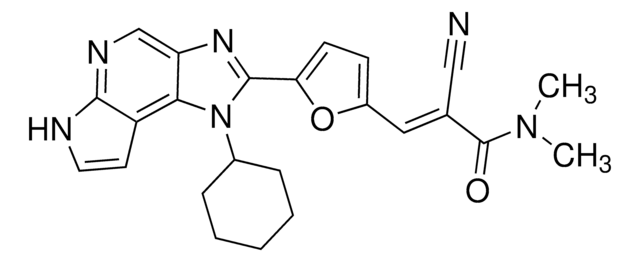346003
Glucagon Receptor Antagonist II
The Glucagon Receptor Antagonist II, also referenced under CAS 191034-25-0, controls the biological activity of Glucagon Receptor.
Synonym(e):
Glucagon Receptor Antagonist II, 2-(4-Pyridyl)-5-(4-chlorophenyl)-3-(5-bromo-2-propyloxyphenyl)pyrrole, L-168,049
About This Item
Empfohlene Produkte
Qualitätsniveau
Assay
≥98% (HPLC)
Form
solid
Hersteller/Markenname
Calbiochem®
Lagerbedingungen
OK to freeze
protect from light
Farbe
light beige
Löslichkeit
DMSO: 45 mg/mL
ethanol: 45 mg/mL
Versandbedingung
ambient
Lagertemp.
2-8°C
SMILES String
Brc1cc(c(cc1)OCCC)c2c([nH]c(c2)c4ccc(cc4)Cl)c3ccncc3
InChI
1S/C24H20BrClN2O/c1-2-13-29-23-8-5-18(25)14-20(23)21-15-22(16-3-6-19(26)7-4-16)28-24(21)17-9-11-27-12-10-17/h3-12,14-15,28H,2,13H2,1H3
InChIKey
HHBOWXZOLYQFNY-UHFFFAOYSA-N
Allgemeine Beschreibung
Biochem./physiol. Wirkung
Glucagon Receptor
Verpackung
Warnhinweis
Rekonstituierung
Sonstige Hinweise
Cascieri, M.A., et al. 1999. J. Biol. Chem.274, 8694.
de Laszlo, S.E., et al. 1999. Bioorg. Med. Chem. Lett.9, 641.
Rechtliche Hinweise
Lagerklassenschlüssel
11 - Combustible Solids
WGK
WGK 1
Flammpunkt (°F)
Not applicable
Flammpunkt (°C)
Not applicable
Analysenzertifikate (COA)
Suchen Sie nach Analysenzertifikate (COA), indem Sie die Lot-/Chargennummer des Produkts eingeben. Lot- und Chargennummern sind auf dem Produktetikett hinter den Wörtern ‘Lot’ oder ‘Batch’ (Lot oder Charge) zu finden.
Besitzen Sie dieses Produkt bereits?
In der Dokumentenbibliothek finden Sie die Dokumentation zu den Produkten, die Sie kürzlich erworben haben.
Unser Team von Wissenschaftlern verfügt über Erfahrung in allen Forschungsbereichen einschließlich Life Science, Materialwissenschaften, chemischer Synthese, Chromatographie, Analytik und vielen mehr..
Setzen Sie sich mit dem technischen Dienst in Verbindung.
